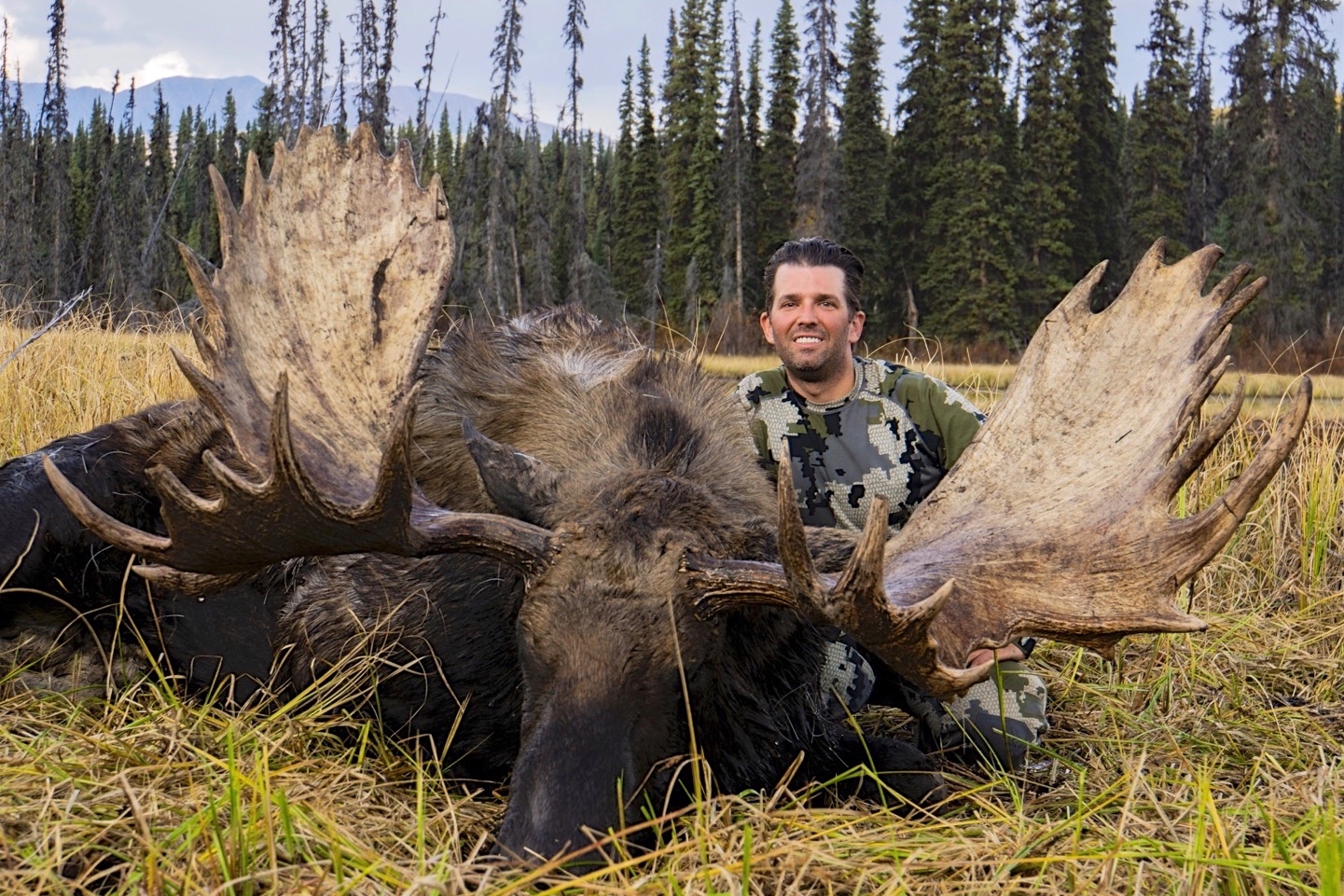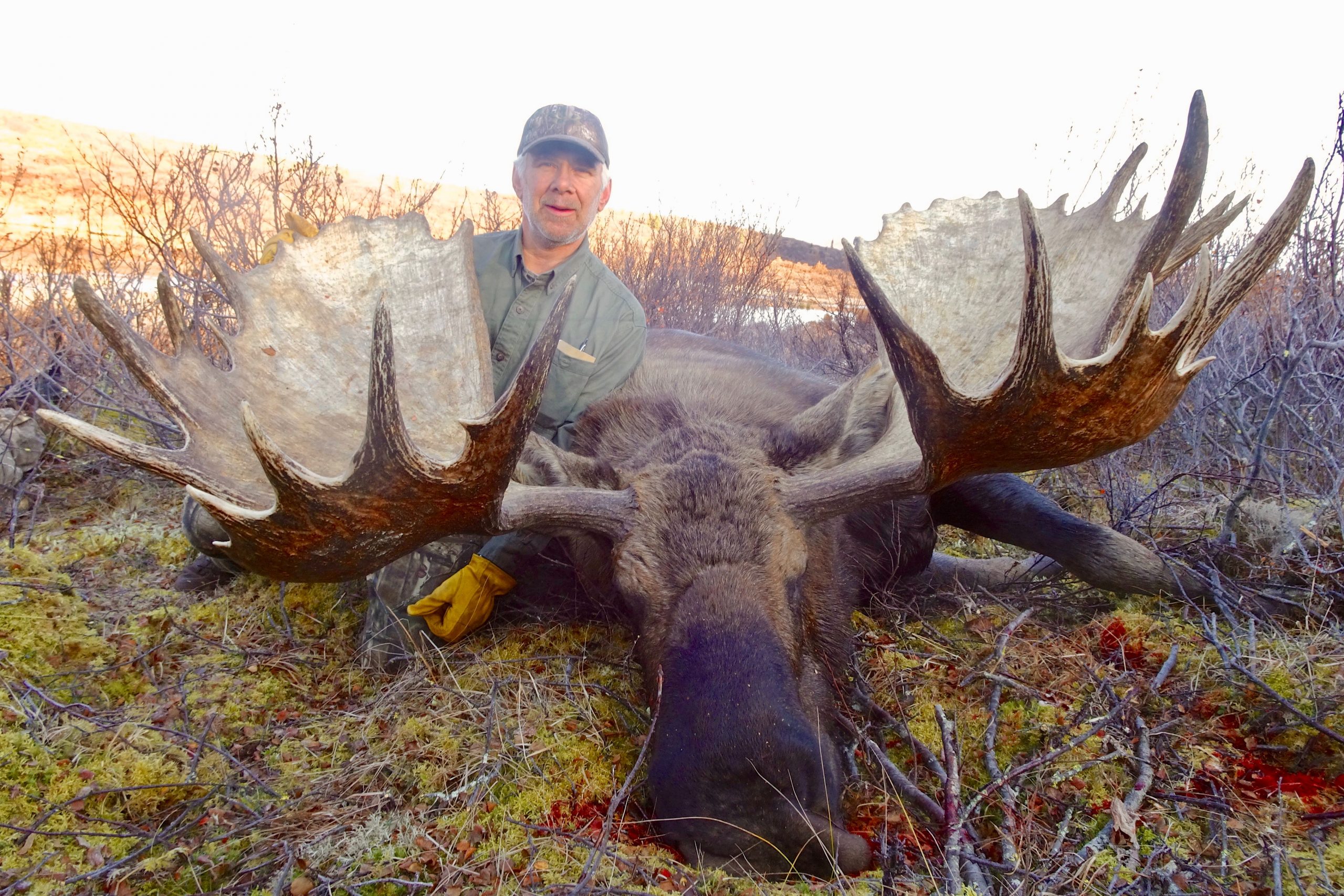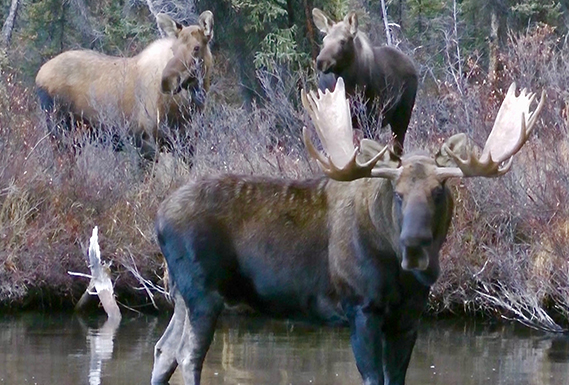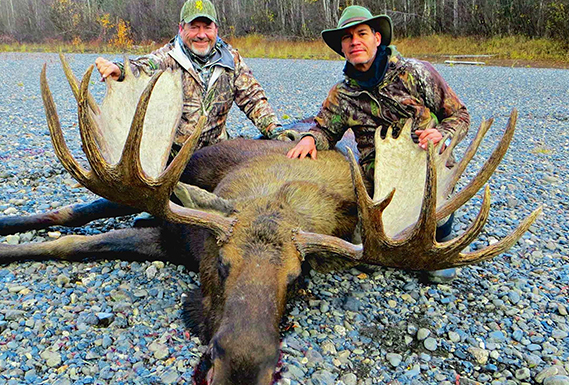MacMillan River Adventures has earned a reputation as a successful outfitter for bowhunting Yukon moose, but we aren’t just a bowhunting outfitter! We take centerfire and muzzleloader Alaska/Yukon moose hunters as well and currently hold the world record position in the Longhunter Society Muzzleloading Big Game Record Book. Any qualified bowhunting guide can successfully guide rifle hunters; the reverse is not true.
Yukon Moose Hunting
MacMillan River Adventures conducts our Alaska/Yukon moose hunts in some of the best habitat found for this subspecies of moose, the largest in the world. The MacMillan River watershed drains through the center of the outfitting concession and produces some of the best moose pasture to be found. Of course the prime habitat comes with some of the highest populations densities to be found in the Yukon. As viewed on the map,Yukon Moose Densities, moose are not a high density animal like whitetailed deer in agricultural areas of southern regions. Don’t expect to see 15-20 moose a day like you would deer hunting over a food plot. You may go several days without seeing a bull but then one morning 2-3 mature bulls may show up courting a cow that has come into heat overnight.
What makes good moose habitat? In the early winter months a large majority of the moose population, both males and females, move to the higher subalpine elevations. Here they find an abundant feed supply of willows to feed on and enjoy the lesser snow depths on the exposed south facing slopes. As calving season nears in late April and May a lot of the cows move down to the low-lying areas areas where multiple ponds, lakes and rivers exist. Here the cow moose can use the waterbodies as protection source for their calves. The first thing a cow moose will do after calving is take the calves for a swim. Some say this is to rinse the after birth off the calves to reduce scent. Others say it’s to introduce them to the water so they learn it is a safe place to be. Moose take to water readily and are good swimmers. Predators have a hard time trying to swim and take down a calf, especially with an aggressive 1000 lb plus mother thrashing at them with 4’ long legs. These water sources also provide a plentiful and nutritious feed supply. Shorelines are always abundant with willows and water lilies grow in most of the waterbodies. Most bulls spend the summer in the alpine areas where their developing antlers aren’t bothered by the dense timber cover of the lower habitat and where the ever annoying mosquitoes and horseflies aren’t as bad. In late August the testosterone starts flowing in these bulls and they start rubbing the velvet off their hardened antlers and challenging one another for dominance. By early/mid September a large percentage of the bulls move down to the lower elevations to join up with the cows for the rut. In mid to late October the moose start their move back up to the subalpine wintering areas.
Whether you choose the horse camp or boat camp hunt be prepared to spend some time sitting and glassing or calling. A bedded moose will rise every 3 hours or so to feed so if you are glassing an area you need to be patient. The large ears on a moose make for great hearing ability and a bull may hear your guide’s calling efforts from a mile or more away under the right conditions. But even a bull coming to a call doesn’t get in a hurry and it may take a couple hours to even know that you have his interest.
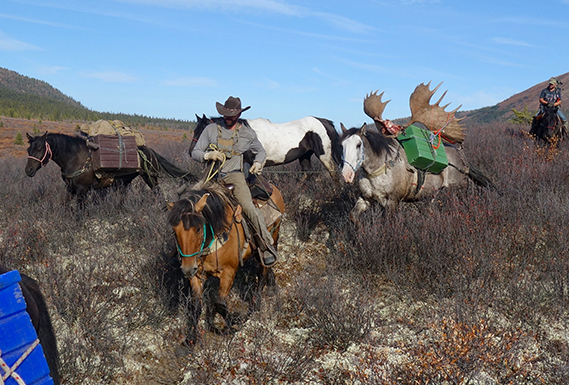
Horse Camp Trophy Yukon Moose Hunts
The more traditional style of Yukon hunting the horse camp hunt offers better opportunities at any of the combo species options offered with each hunt. This is also the hunt if you are one of those who “likes to make things happen.” Having the horses allows the flexibility to pack up your camp and ride over the hill into new hunting territory. We utilize some outpost cabins and you can expect to spend some time in a tent sleeping on the ground. You will hunt the higher and lower elevation habitats on this hunt, going where necessary to find that trophy Yukon moose.
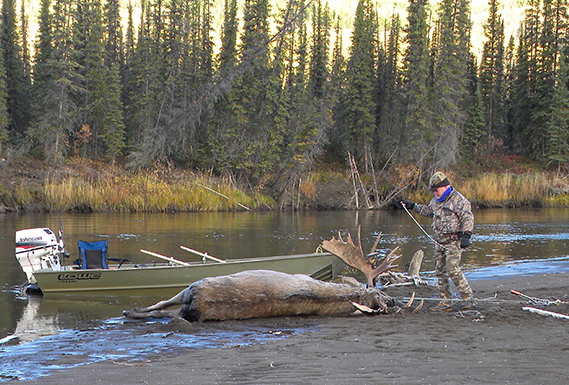
Boat Camp Trophy Yukon Moose Hunts
Enjoy the comforts of returning to your cabin each night with a wood fire, generator for some power and a foam mattress on a wooden framed bed. Get up early for the hunt and walk to the shoreline to find your ride where you left it tied the night before. A large majority of the bulls taken on this hunt are spotted from the boat. Bulls will travel the shorelines during the cooler hours of early morning and late day in search of cows feeding at the waters edge. As daytime temps increase the moose move into the shaded timber cover. Calling setups may include sitting in a location for 2-3 hours waiting for a bull to respond.
Our Yukon moose hunting trips are 12 days with 10 full days of hunting, and offer great opportunities for hunting other species.


